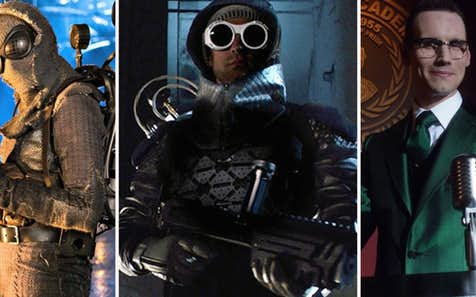
Promoted as a Batman show without the Batman, Fox’s Gotham series got off to a rocky start in its first season. The show struggled in building and maintaining a compelling overarching narrative, and villain-of-the-week episodes plagued the series early on. As the above was under scrutiny, Gotham also faced a bevy of questions regarding its premise. Chief among such questions was how the show could make sense of introducing Batman’s rogues as older characters, when Bruce Wayne was but a child. Would it be fair for a mid-20s Dark Knight to regularly take on criminals twice his age? To some the answer was a simple, “no.” Others, though, were willing to give the show an honest chance to prove itself. Many fans would argue it has paid off nicely over time.
RELATED: The Dank Knight Rises: 15 Gotham Memes More Entertaining Than The Show
The pay off, for the most part, has been in the very thing that was once heavily criticized — Gotham’s depiction of Batman villains. Some rogues featured in the series are well done, often adding to the overall mythos. However, there are a few villainous characters that fail to hit the mark. Here, we will take a look at villains Gotham has improved upon, and those that haven’t worked quite as well.
15. MADE BETTER: RA’S AL GHUL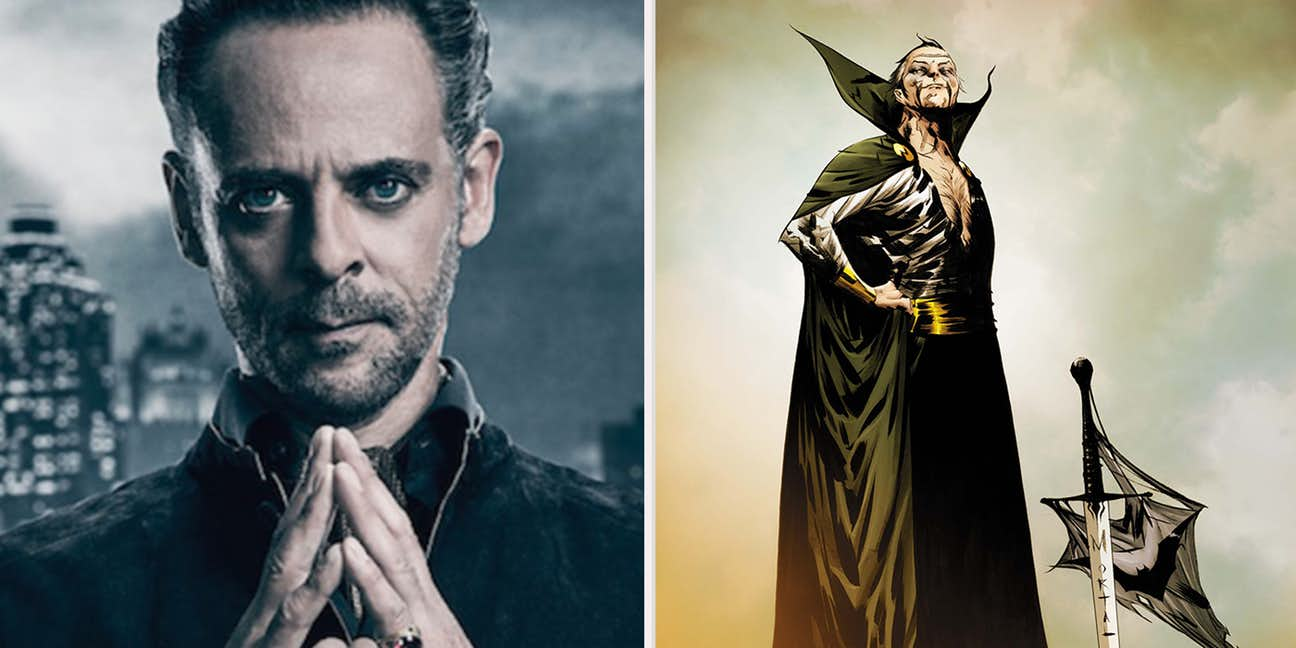
Of late, it has been difficult to imagine a live-action DC property without the Demon’s Head. Ra’s al Ghul made his big screen debut in Christopher Nolan’s Batman Begins, hit the small screen in Arrow’s third season, and is currently recurring on Gotham. His role in the latter series is probably the most interesting, since it’s been revealed that Ra’s is Gotham’s overarching villain. Apparently, he’s had a hand in many of the show’s major events, acting as an invisible puppet master behind the scenes.
His orchestrating nefarious happenings seems to be one of the few unique aspects of this iteration; Ra’s endgame, per usual, is Gotham’s destruction. Another fascinating alteration is the villain’s inclusion in Bruce’s life prior to Batman. This time, instead of attempting to convince Batman to take his place, the immortal is preparing the young boy to be the heir to the Demon early on.
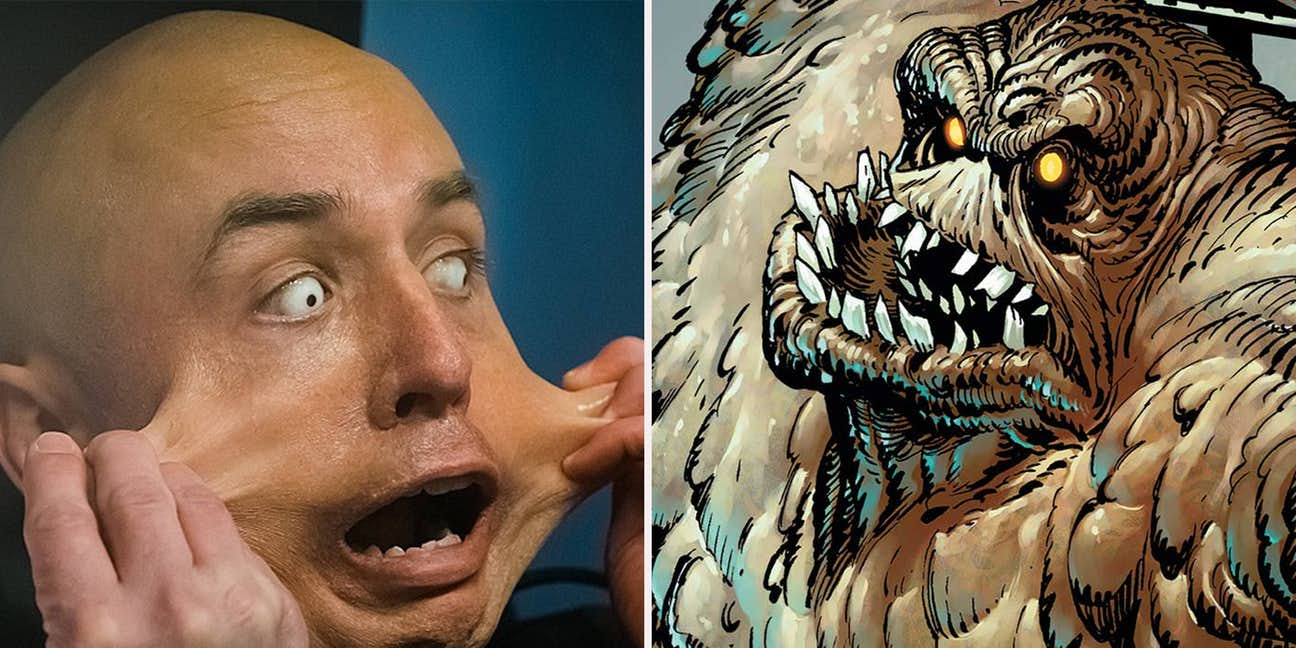
As a legacy character, Clayface has plenty of iterations fans could choose as their favorite. Interestingly, the most recognizable is Basil Karlo. In each version involving him, Karlo is a subpar actor who for one reason or another descends into a life of crime. Thus far, he has appeared on Gotham twice — once in season two, with a subsequent role during the show’s third outing.
He debuts in the series as one of Hugo Strange’s subjects; after undergoing experimentations that turn Karlo into a shapeshifter, Strange tasks him with impersonating Gordon. Ultimately, the plan fails… almost too easily, as Barbara Kean effortlessly deduces that Karlo’s Jim isn’t the real deal. He later returns to impersonate Penguin’s father, an act that publicly puts Cobblepot in a difficult position. They’re intriguing uses of the villain, but bland in comparison to ways he’s been portrayed elsewhere.

The Court of Owls’ first being teased in Gotham season one surprised many, and few could anticipate the Court’s increasingly prominent role throughout the series. During their debut in the New 52, the Court posed an ominous threat to Batman, Gotham, and the world at large. Their massive criminal empire dates back centuries and their influence is increasingly evident, especially in political and infrastructural spheres.
The organization works similarly in Gotham, but the goings on are much more visible in season three. Because of their acting as the big bad of the show’s third run, the Court could be considered as more front facing villains. This dissipates the veil of mystery they masterfully wield in the comics, but provides an inside look at the secretive cabal. Some of the organization’s peculiar elements seem to have been neglected (mutations, Barbatos, etc.), but perhaps that will receive attention in later seasons.
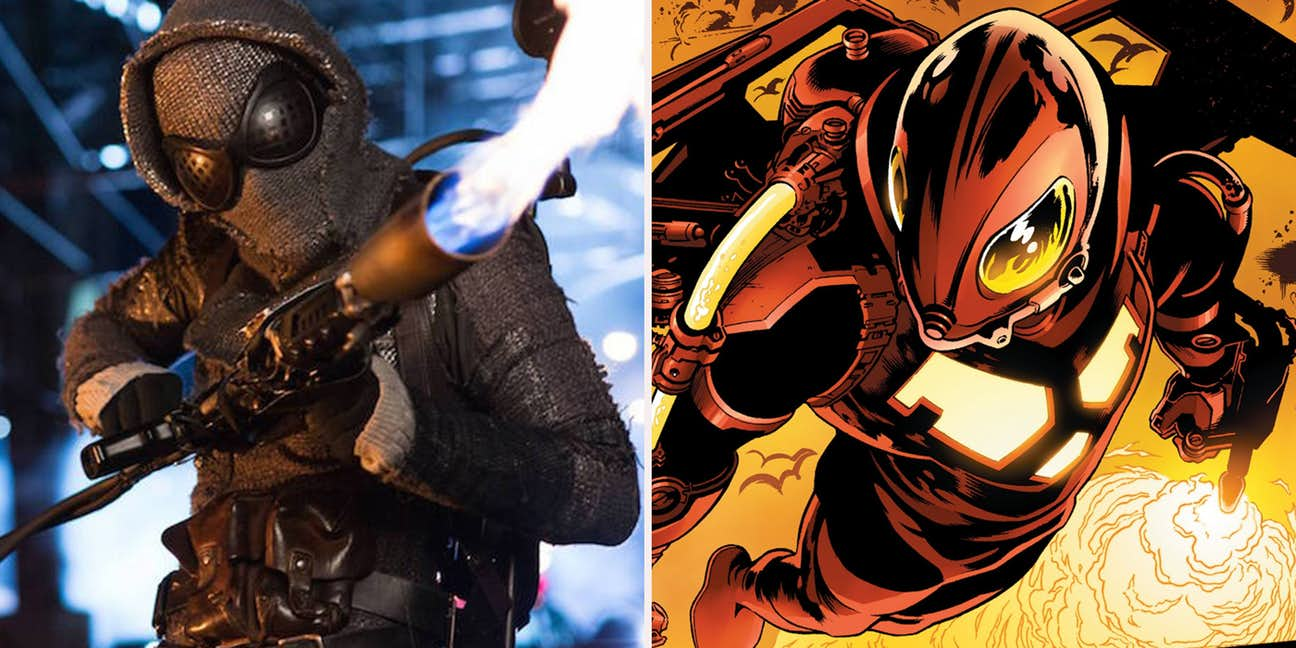
Firefly has been depicted as two different characters, both which are usually men. Gotham, though, debuted its version of the rogue as a woman named Bridgit Pike with a heartbreaking backstory and a remarkable character arc. Sadly, the character arc took a turn for the worse upon her beginning to commit to a life of crime.
The audience meets Bridgit through the lens of Selina Kyle as the two are reunited. It’s quickly revealed that Bridgit has ties to a gang of arsonists, one of whom is her step-brother. She’s coerced to work with them and one outing results in a man’s death, forcing Bridgit to flee Gotham. After a series of tragic events and a stint at Hugo Strange’s Indian Hill, she joins Penguin’s growing gang of villains. It’s too bad she’s never given a chance to achieve much, even as a villain, while independent of others.
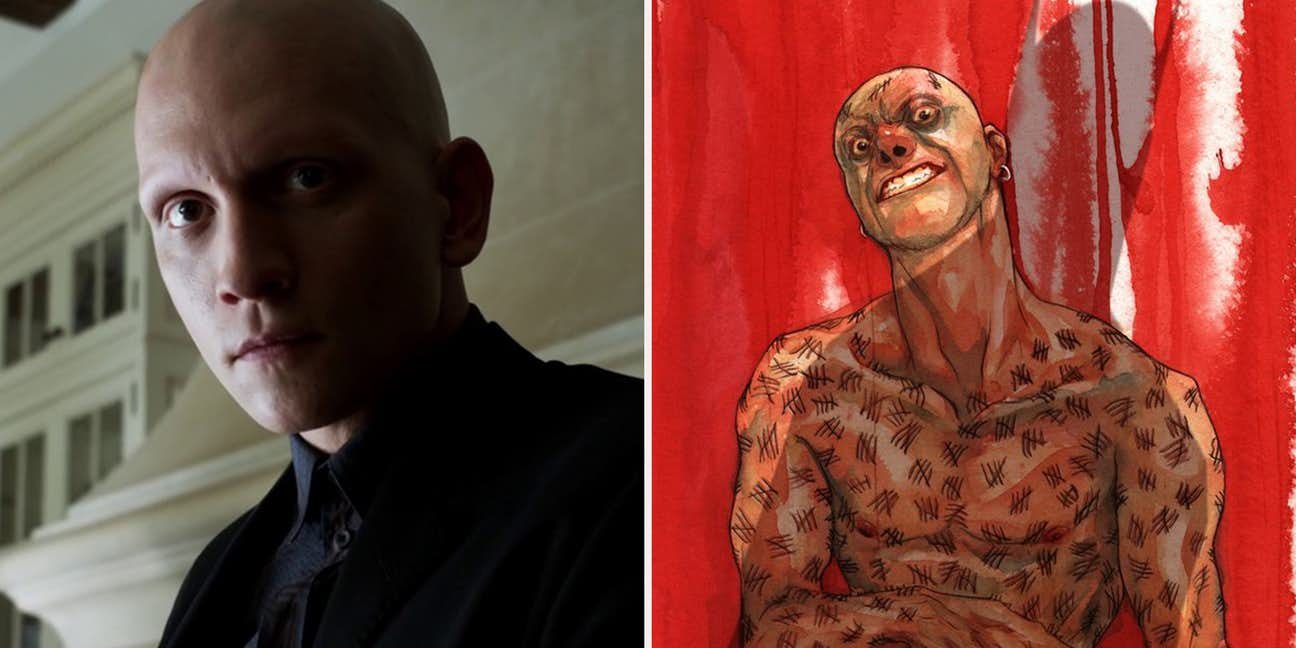
Victor Zsasz is a Batman foe who has been getting a lot of love over the last several years, slowly but surely rising from the ranks of C-list stardom. While he’s not quite a household name as of yet, few will be surprised if in the near future he does garner such notoriety. Gotham, without question, has been integral to Zsasz’s continued growth in popularity.
Despite not appearing too often in the Fox series, the character’s recurring role on the show is usually welcomed amongst fans. During season one, Zsasz first appears as a trusted goon of Carmine Falcone. He’s competent and great at his job; his typical depiction as a crazed madman is the icing on the cake. Gotham examines a different aspect of the character, a somewhat composed yet still maniacal iteration that’s all the more terrifying.
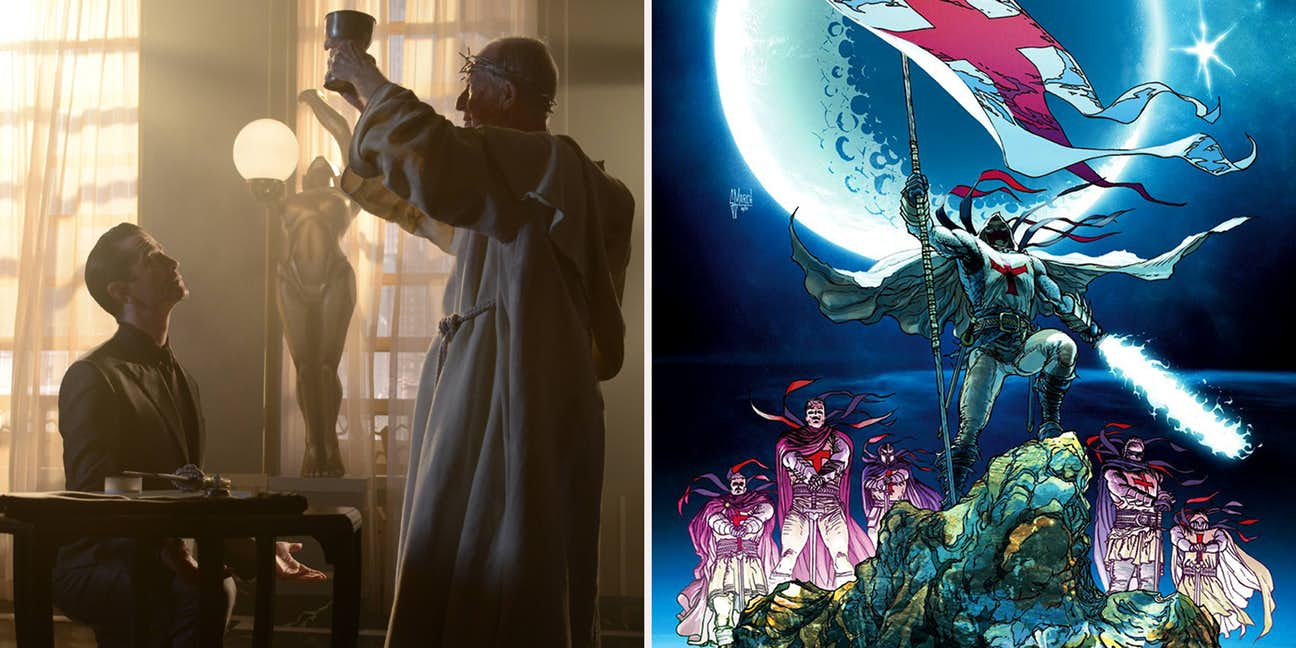
The Order of St. Dumas is one of DC’s more intricately crafted organizations with a history that runs nearly a millennia. In the comics, the Order was originally a branch of the Knights Templar — the devout military group who were sworn to protect Christian pilgrims and fought in the 12th Century Crusades. The Order has a similar history in Gotham, but the organization as a whole isn’t as complex in scope.
With ties specifically to the city of Gotham and some of its more prominent citizens, the Order seems limited in what they can accomplish, especially when considering their worldwide relations in other interpretations. This could be a product of their arc receiving sole exploration as kind of a secondary villain in the background of Gotham’s sophomore effort. The way things concluded for them seems somewhat finite, but here’s to hoping there is plenty more to the story going forward.

Few characters in Gotham have been as transformative as Oswald Cobblepot/Penguin. Starting off as a flunky to Jada Pinkett-Smith’s Fish Mooney, Robin Lord Taylor’s take on the classic foe continuously turns heads. Over time, Penguin has risen through the ranks of Gotham’s criminal underworld, going from mocked out of a room to inducing the same fear his former employer once incited.
Also intriguing is that while he’s certainly being portrayed in a villainous light, he also walks a gray line, one that often aligns him with the likes of James Gordon. After decades of seeing Penguin depicted as an over-the-top, yet prim and somewhat proper criminal, it’s been awesome to have him explored in a variety of different ways in television and games. Without a doubt, Gotham has been leading the charge in this respect, offering a compelling look at a young and upcoming Oswald Cobblepot.
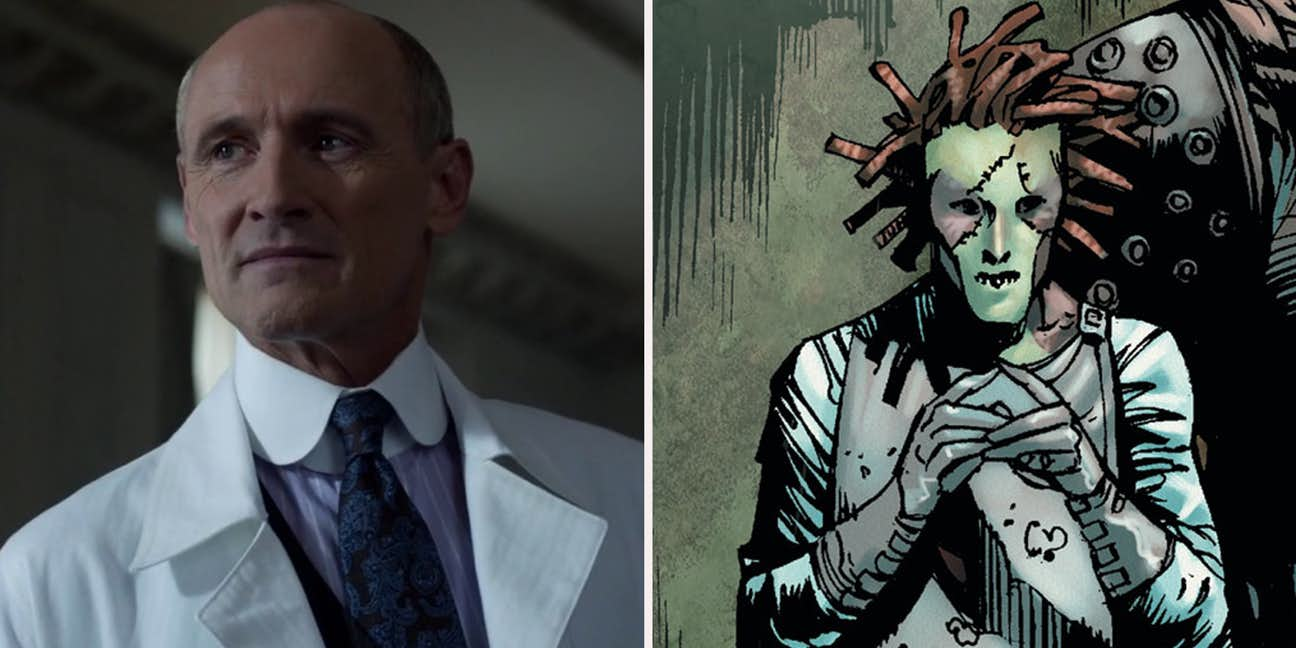
Sadism cannot even begin to describe the Dollmaker, a Gotham City serial murderer whose family has a history of similar disturbing acts of violence. The villain is not particularly well known, but appearances on The CW’s Arrow and in Rocksteady’s Arkham series have brought him in front of mainstream audiences in recent years.
On Gotham, however, Dollmaker is a doctor, Francis Dulmacher, in charge of a hospital on a privately owned island. He only appears a couple of times during season one, and is revealed to abduct people that he uses for scientific experimentation. As the villain of a Fish Mooney-focused subplot in the back half of season one, Dollmaker now seems to have been nothing more than a primer for Professor Hugo Strange’s arrival in season two.
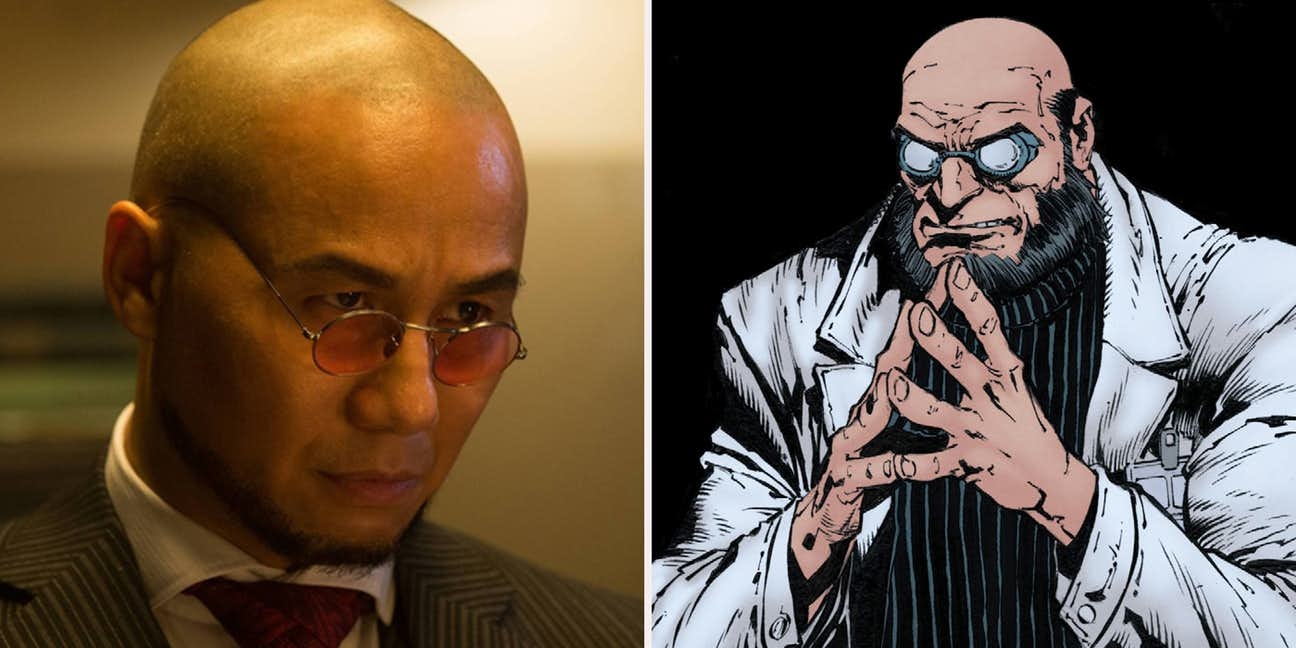
Professor Hugo Strange is undoubtedly one of Batman’s more fascinating rogues. Fortunately, media outside of comics has gone above and beyond to bring the character the notoriety he deserves; Gotham is no exception. The Fox series had the tough task of writing a character historically obsessed with the Dark Knight into a show wherein the crimefighter is not yet crime fighting. Thanks to BD Wong’s extraordinary performance and a storyline to match, Gotham excelled wonderfully.
The character debuts as the main villain of season two, running an illicit research facility (Indian Hill) beneath Arkham Asylum, the institution in which he is director. Experiments he conducts are inhumane, but they aren’t the only thing that sets this version of the foe apart from others. Strange is also given a compelling backstory and a connection to the Wayne family that’s relatively unique to Gotham.
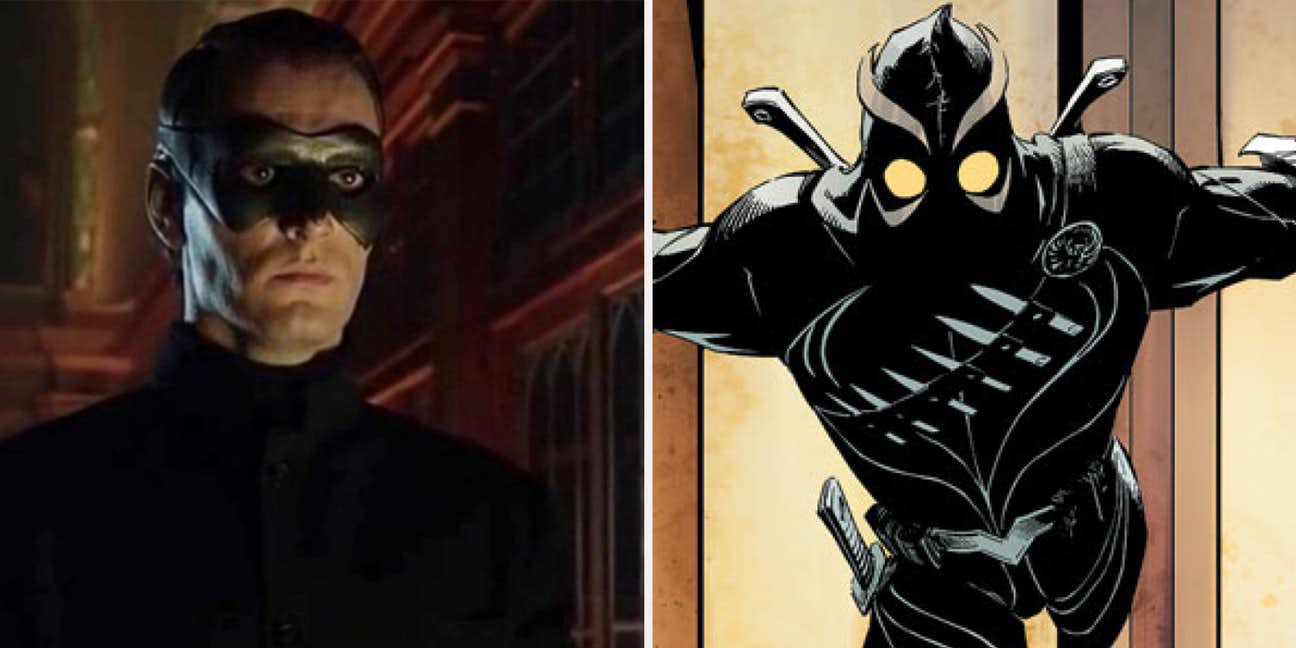
Talon’s minor role on Gotham is the one that makes Batman’s absence from the series most notably felt. Despite being a new character, introduced during DC’s New 52 run of Batman books by Scott Snyder, Talon is already a force to be reckoned with in the vigilante’s rogues gallery. Arguably, the same cannot be said of the assassin’s counterpart on the Fox show.
He debuts in the series as a Court of Owls agent, ordered to kill Bruce Wayne. Upon arriving at Wayne Manor to complete the deed, Talon is pit against Alfred. From thereon, his appearances are infrequent and his character isn’t given much of an arc. Essentially, Talon is the muscle and little else. It’s unfortunate; in the comics, Talon’s backstory and abandonment of the Court are just as exciting as his exploits as an assassin.
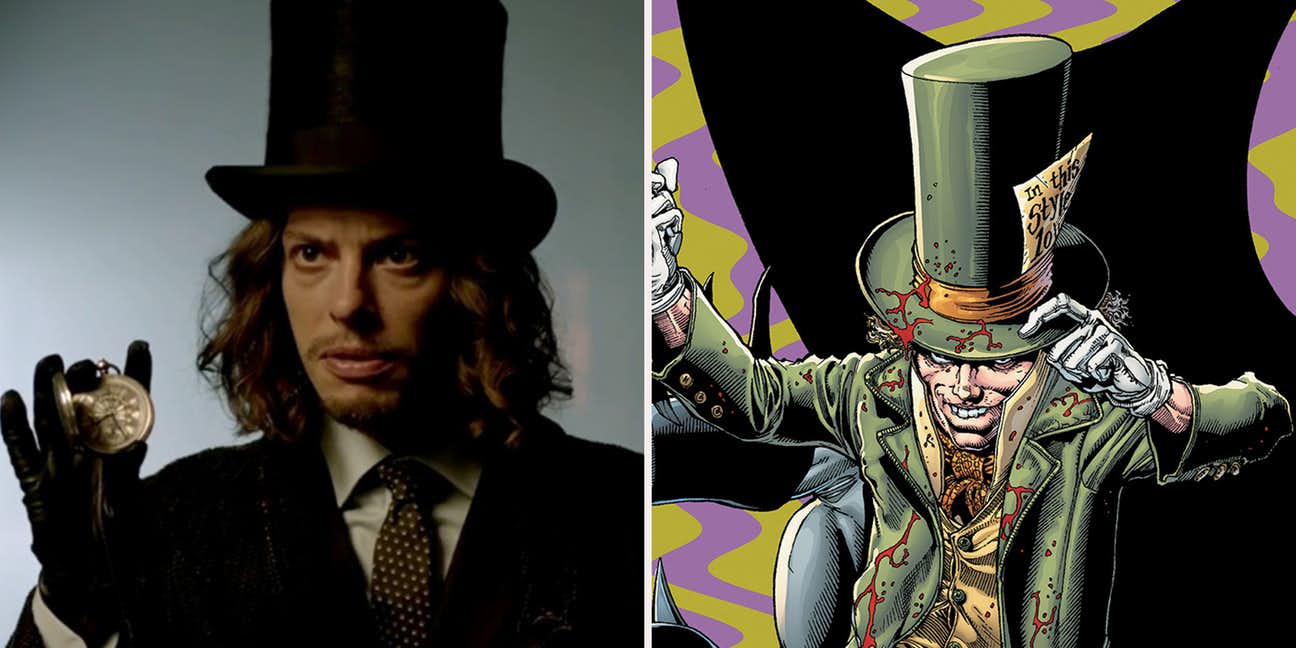
Jervis Tetch, aka the Mad Hatter, is never not fun to watch in action. As a character who has popped in and out of DC lore since the ’40s, Mad Hatter remains one of Batman’s more beloved foes. Thankfully, the last couple of decades have seen him translated across other media. The character is often depicted as an Alice in Wonderland-obsessed deviant, who occasionally has an inclination to kill. Gotham, however, takes Mad Hatter a step further and it’s surprisingly well executed.
In Gotham, the skilled hypnotist’s obsession with his sister, Alice, is brought to life by Benedict Samuel, a consummate performer who does the character and his quirkiness justice. As a recurring villain, there are nuances to Tetch that typically go unexplored. This is brought about not only in his personality, but in his behavior and the season-long story arc that sees him flourish.
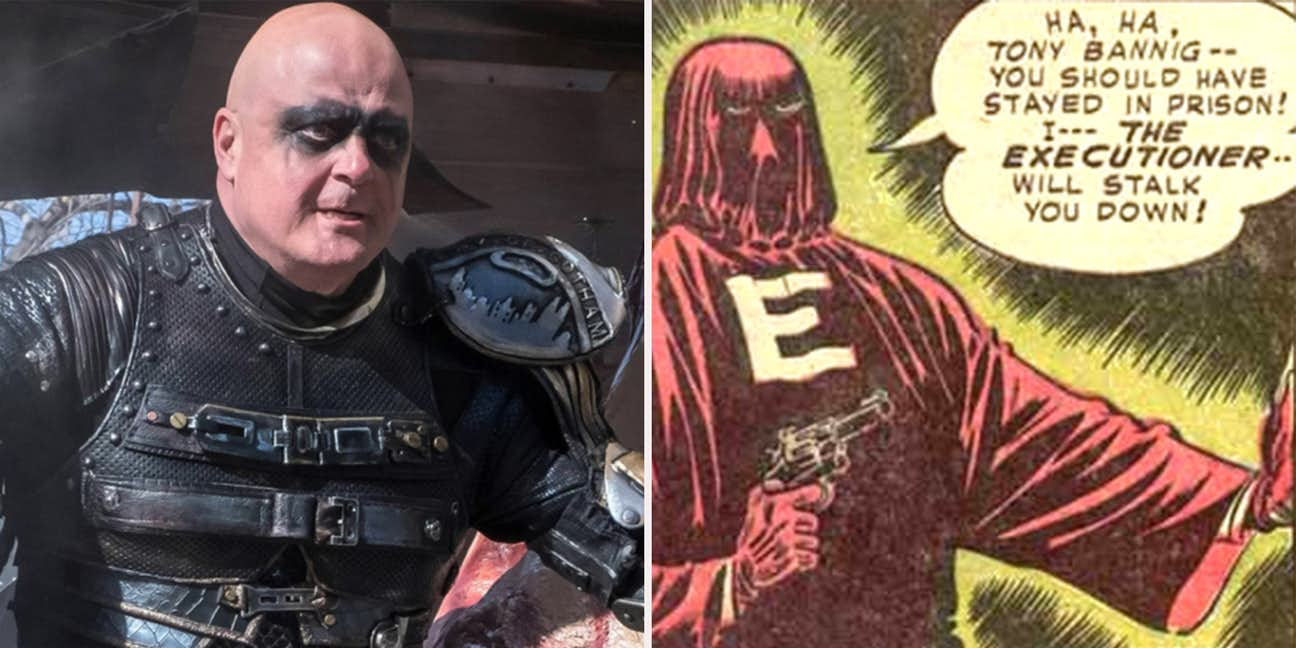
It’s fair to say that Gotham did indeed enhance The Executioner as a villain. This obscure Batman rogue was seemingly abandoned long before the events of “Crisis on Infinite Earths” in the ’80s and never returned in any significant capacity. Therefore, his depiction in live-action on the small screen is one that’s worthy of note. The issue, though, in in the character used to accomplish such an interesting feat — Michael Chiklis’ NCPD Captain, Nathaniel Barnes.
Of course, it is sad to see a good cop, an honorable man of the people, turn to the side of corruption and immorality. In this instance, it’s especially unfortunate that it’s spurred on by poisoning from the blood of Alice Tetch. That it took a medical mystery to relegate Barnes to a path of villainy is interesting, but it still would’ve been nice to see such a devolution of character happen naturally.

Crime families are at the heart of Gotham, often ruling through a myriad of organized crime ventures, such as drugs and weapons, while simultaneously having pull with the police force and local government. The Falcone family is one such criminal enterprise, run by Carmine Falcone aka The Roman. Falcone is often portrayed as the brains of his family’s operation, and presents a threat that Batman typically makes it his goal to fight against.
Gotham presents him similarly, but in a manner that rivals some of the best Falcone-centric narratives, like Year One and The Long Halloween. Gotham depicts Falcone emotionally vulnerable, physically weak, and at odds on how best to proceed with certain decisions. Even his retirement is relatively interesting, and he’ll hopefully receive further development as the series progresses.

Initially introduced as the GCPD’s quirky and oddly peculiar forensics guy, Edward Nygma showed great promise early in Gotham’s first run. Brilliantly played by Cory Michael Smith, the character’s personality brought life to the show’s darker aspects and helped set the tone for the series early in its development. What worked was his obsessive nature, which creepily shown in more than his work ethic as his attachment to a co-worker, Kristen Kringle, began to evidence his impending sinister behavior.
Schizophrenia develops into a terrifying issue that he eventually succumbs to, culminating in the murder of Ms. Kringle’s boyfriend and later Ms. Kringle herself. Where this version of Riddler falters is in his appearing to be a caricature of the villain rather than an actual interpretation of him. Yes, he’s clever, criminally insane and obsessed with riddles, yet these surface level characteristics feel like Riddler traits applied to another character.
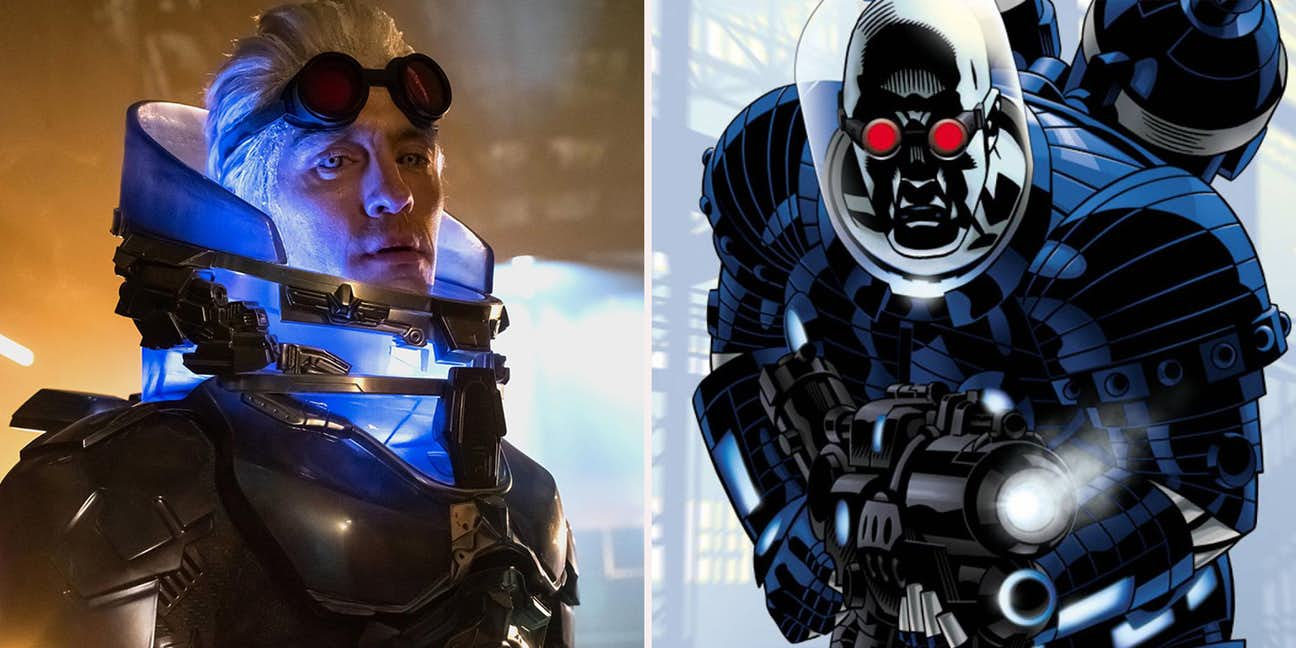
As far as DC lore is concerned, Victor Fries is typically a money-hungry criminal. However, 25 years ago, this was drastically altered thanks to Paul Dini’s award-winning Batman: The Animated Series episode, “Heart of Ice.” The Dini-written episode turned the campy Mr. Freeze into a tragic and sympathetic figure, one even the Batman could emphasize with. No longer was the villain’s immoral behavior driven by greed; he was instead in a race against time to save his dying wife, a task he firmly believed only he could accomplish.
Gotham’s iteration of the character explores a similar backstory, but it’s far darker and incredibly more tragic — Nora Fries, Victor’s wife, dies. As a result, he attempts to commit suicide. Victor fails in his attempt, and, thus, Mr. Freeze is born. Following his transformation, Mr. Freeze acts as a hired gun of sorts.
